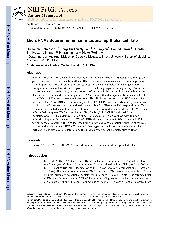摘要
MicroRNAs (miRNAs) are small, non-coding RNA molecules that post-transcriptionally regulate gene expression. Evidence has shown that miRNAs play important roles in various cellular processes, including proliferation, differentiation and survival. The intestinal epithelium is regenerated throughout life, and enterocytes undergo differentiation during migration along the crypt/villus axis. Our study aimed at establishing the expression profiles of miRNAs during intestinal epithelial cell (IEC) differentiation and determining a miRNA "signature'' that distinguishes between small and large IECs. MiRNA arrays were employed to profile miRNA expression in two IEC models: the enterocyte-like Caco2-BBE and the colonocyte-like HT29-Cl.19A cell lines. Microarray data showed that in both cell lineages, the differentiated stage exhibited a different miRNA expression profile from undifferentiated stage. Interestingly, Caco2-BBE cells were distinguished from HT29-Cl.19A cells by their unique miRNA expression profile. Notably, HT29-Cl.19A cells exhibited down-regulation of miR-1269 and up-regulation of miR-99b and miR-125a-5p compared with Caco2-BBE cells. Most importantly, transfection of Caco2-BBE cells with mature miR-99b, mature miR-125a-5p and antisense of mature miR-1269 decreased growth rate and trans-epithelial resistance of the cells, indicating their shift toward HT29-Cl.19A cell phenotype. In conclusion, our study shows that miRNAs might play a role in determining the unique physiological characteristics of IECs.
- 出版日期2010-10
